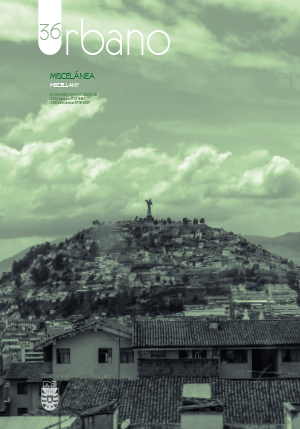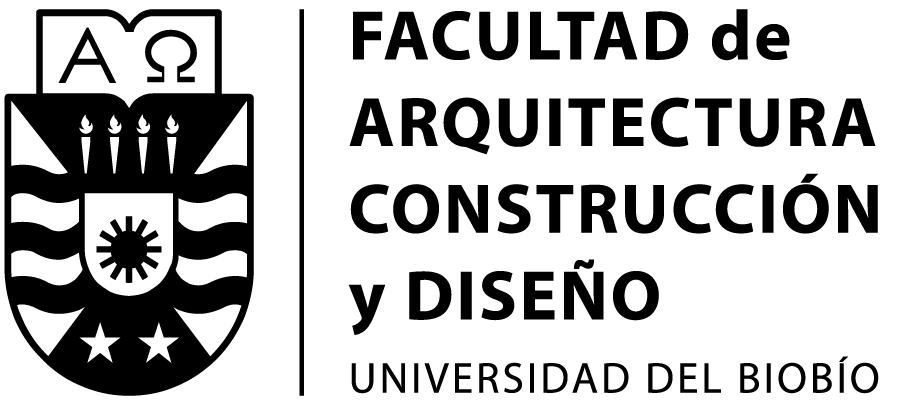Gestión de residuos y segregación urbana: Villa estaciones ferroviarias de Puente Alto, Santiago de Chile (1985-2015).
DOI:
https://doi.org/10.22320/07183607.2017.20.36.04Palabras clave:
gestión de residuos domiciliarios, vivienda social, Santiago de Chile., segregación urbana, basura urbana, gestión de residuos, Santiago de ChileResumen
El desarrollo urbano en Chile y Latinoamérica desde fines del siglo XX ha producido ciudades segregadas según el nivel de ingresos de sus habitantes, profundizando las condiciones de desigualdad de la población, al generar paños homogéneos de sectores pobres. Esta desigualdad no sólo se limita a los ingresos de la población, sino a la distribución de oportunidades y costos urbanos a los que se somete a dicha población. Uno de estos costos es la localización de depósitos de residuos, ubicados en las comunas que han concentrado la pobreza, donde a la vez se emplaza la vivienda social entregada por el sistema de subsidios y gestionada por el sector empresarial de la construcción. Se produce, por tanto, una relación entre comunas productoras de basuras y comunas receptoras, cuestión que va en aumento debido al sistema de gestión de basura tradicional que se mantiene en Chile. En ese contexto, este artículo propone analizar las consecuencias del sistema de gestión no sustentable de basura y su relación con el sistema de vivienda social subsidiario que se aplica en Chile, específicamente en la Región Metropolitana. Para lo anterior, se abordará el caso de la Villa Estaciones Ferroviaria de Puente Alto, construida a principios de la década de 1990, entregada por programas de subsidios habitacionales y emplazada sobre un ex vertedero. Mediante esta investigación, se busca replantear el enfoque reactivo de la gestión de residuos domiciliaros en aras de volverlo uno preventivo, de modo que la dedicación mayoritaria del sistema a la eliminación de residuos -con problemas de espacio, terreno y enfermedades–, se transforme en planes de reducción, reutilización, reciclaje y eliminación sustentable de basura.
Descargas
Citas
Arenas, Ana. El ex basural La Cañamera y las Villas Ferroviarias. Responsabilidad Social. [30 de junio de 2011]. http://responsabilidadsocialintegrada.blogspot.cl/2011/06/justicia-ambiental-el-ex-basura-la.html
Blanco, Jorge; Apaolaza, Luciana; Bosoer, Ricardo. Gentrifi cación, movilidad y transporte: aproximaciones conceptuales y ejes de indagación. Revista de Geografía Norte Grande. 2014, V.58 p.41-53.
Bravo, L.uis y Martínez, Carlos. Chile: 50 años de vivienda social. 1943-1993. Valparaíso, Facultad de arquitectura de la Universidad de Valparaíso, 1993.
Congreso Nacional. Código Sanitario. Decreto con fuerza de ley n° 725. Artículo. Atribuciones y obligaciones sanitarias de las municipalidades. Artículo 11 letra a). Santiago de Chile: Biblioteca del Congreso Nacional. 1968.
Ducci, María. Chile: el lado oscuro de la política de vivienda exitosa. EURE. 1999, N°69, p.99-115.
Gobierno de Chile. Constitución política de la república de Chile, artículo 8°. Santiago de Chile, Ministerio del Interior. 1980.
Hahn, Rodolfo.. Vecinos de villa de Puente Alto exigen erradicación por altos índices de gas en la zona. BioBio Chile. [10 de julio de 2011]. http://www.biobiochile.cl/noticias/2011/06/10/vecinos-de-villa-estaciones-ferroviarias-de-exigen-erradicacion-por-altos-indices-de-gas-en-la-zona.shtml.
Mankiw, N. Gregory. Principios de Economía. Sexta edición. México D.F: Cengage Learning. 2012.
Matus, Patricia.. Introducción a la Salud Pública. Concepción. Centro de Ciencias Ambientales Universidad de Concepción, 2011.
Ministerio del Medioambiente. Informe del estado del Madioambiente. Santiago de Chile. Ministerio del Medioambiente. 2011.
Ministerio del Medioambiente. Ley núm. 20.920 establece Marco para la gestión de residuos, la responsabilidad extendida del productor y fomento al reciclaje. [11 de julio de 2016]. Biblioteca del Congreso Nacional: https://www.leychile.cl/Navegar?idNorma=1090894.
Organización Mundial de la Salud. Síndrome de Guillain–Barré. Centro de prensa. [Marzo de 21016]. http://www.who.int/mediacentre/factsheets/guillain-barre-syndrome/es/.
Pizarro, Claudio.. El fatal destino de las casas copeva: Viviendo sobre un basural. The Clinic online. [15 de junio de 2011]. http://www.theclinic.cl/2011/06/15/viviendo-sobre-un-basural/.
Publicaciones Medicina Universidad Católica.. Síndrome de Guillain-Barré. [12 de julio de 2016]. http://publicacionesmedicina.uc.cl/TemasMedicinaInterna/pdf/SindromeGuillain.pdf
Sugranyes, Ana y Rodriguez, Alfredo. Los con techo, un desafío para la política de vivienda social. Santiago de Chile: SUR. 2005
Tanida, Hisashi. La vida tres metros sobre un basural. El Desconcierto. [18 de diciembre de 2014]. http://www.eldesconcierto.cl/pais-desconcertado/politica/2014/02/18/la-vida-3-metros-sobre-un-basural/.
Tapia, Ricardo. Vivienda social en Santiago de Chile. Análisis de su comportamiento locacional. Periodo 1980-2002. INVI 2011, N°73, V. 26 p.105-131.
Valencia, Manuel. Corte Suprema obliga al fisco a indemnizar a 158 familias en Bajos de Mena. El Mercurio. [09 de mayo de 2013]. http://diario.elmercurio.com/detalle/index.asp?id={79c89676-033f-4d2b-b189-068307151ebb}
Descargas
Publicado
Cómo citar
Número
Sección
Licencia
El contenido de los artículos y reseñas que se publican en cada número de Urbano, es responsabilidad exclusiva de los autores y no representan necesariamente el pensamiento ni comprometen la opinión de la Universidad del Bío-Bío.
Las/os autoras/es conservarán sus derechos de autor, sin embargo, garantizarán a la revista el derecho de primera publicación y difusión de su obra. La publicación del artículo en Urbano estará sujeta a la Licencia de Reconocimiento de Creative Commons CC BY-SA que permite a otros compartir-copiar, transformar o crear nuevo material a partir de esta obra para cualquier propósito, incluso comercialmente, siempre y cuando se reconozcan la autoría y la primera publicación en esta revista, y sus nuevas creaciones estén bajo una licencia con los mismos términos.![]()























